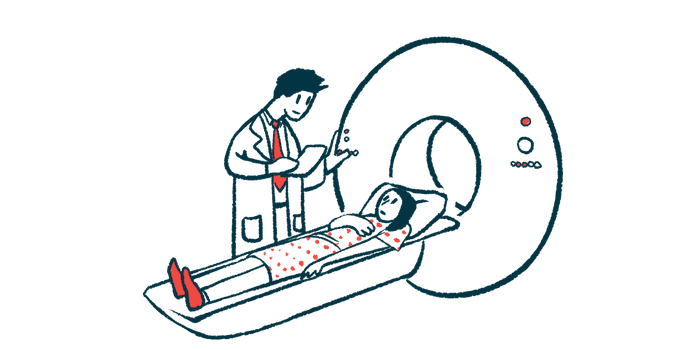Novel MRI Measures for Leg Muscle Fat Linked to CMT1A Severity
These parameters could be used as biomarkers for CMT1A severity and disability

Novel parameters for MRI scans that measure the degree of muscle fat in specific regions of the legs showed a positive correlation with clinical indicators of disease severity and disability in people with Charcot-Marie-Tooth disease type 1A (CMT1A), a study reports.
The findings suggest that these new MRI parameters could potentially be used as biomarkers that reflect disease severity in CMT1A patients.
The study, “Magnetic resonance imaging-based lower limb muscle evaluation in Charcot-Marie-Tooth disease type 1A patients and its correlation with clinical data,” was published in the journal Scientific Reports.
CMT1A is the most common type of CMT, a group of inherited neurological disorders characterized by weaker muscles. People with CMT may also experience loss of sensation and difficulty walking.
Clinicians generally rely on physical examinations and procedures that evaluate the electrical signals between muscles and nerves to assess CMT1A patients. However, more objective tools are lacking which has led to the increasing use of imaging studies. One of these tools is the evaluation of the amount of fat in leg muscles through an MRI scan.
Researchers develop MRI parameters of muscle fat for leg and thigh regions
Previous research has shown that in CMT patients, the proportion of fat in the leg and thigh muscles, determined by MRI scans, correlated with disease severity and disability.
Now, looking to further the search for potential biomarkers of disease severity, researchers in South Korea developed MRI parameters of muscle fat for specific regions of the legs and thighs.
“To our knowledge, few studies have evaluated imaging parameters that comprehensively reflect the degree of muscular fat infiltration based on semiquantitative MRI in patients with CMT,” the team wrote.
MRIs from the legs of a total of 116 patients (63 male and 53 female) with CMT1A were reviewed. Their ages ranged from 8 to 78 years, with a mean of 41.7 years. Age at disease onset ranged from 1 to 77 years.
Based on the MRI scans and the Mercuri scale, which grades the amount of fat in muscle, three parameters were calculated: fat infiltration proportion (FIP), significant fat infiltration proportion (SigFIP), and severe fat infiltration proportion (SevFIP). These parameters were applied to three distinct levels, or sections, of the thigh, and two for the lower leg.
The three parameters were also determined for all 46 muscles of the lower extremity — the part of the body from the hip to the toes.
Next, the team studied the relationships between the MRI parameters and clinical data. The researchers used clinical parameters such as the CMT Neuropathy Score version 2 (CMTNSv2), a measure of disability which ranges from 0 (no deficit) to 36 (maximum deficit), and the 10-meter walk test (10-MWT), to evaluate walking speed.
The functional disability scale (FDS) score was used to measure disease severity in terms of the ability to walk and run, and it ranges from 0 (normal) to 8 (bedridden).
Patients’ CMTNSv2 scores ranged from 5 to 32 (median 16) and their FDS scores ranged from 0 to 7 (median 2). The 10-MWT times ranged from 6 to 31.6 seconds (median 10.8 seconds).
Statistical analysis showed that the three MRI parameters measured for all muscles in the lower extremity correlated with the CMTNSv2 score, FDS score, 10-mMWT time, and disease duration.
Additionally, the MRI parameters taken from the two lower legs showed moderate correlations with FDS scores. SigFIP at one of these sections moderately correlated with CMTNSv2. In contrast, no significant correlation was seen between age at disease onset and MRI parameters.
“In conclusion, we proposed preliminary MRI parameters that may comprehensively reflect the severity of intramuscular fat infiltration at designated levels of the lower extremity,” the researchers wrote.
“These parameters were positively correlated with clinical parameters, thereby indicating their potential applicability as imaging biomarkers that clinically reflect disease severity in these patients,” they added.








